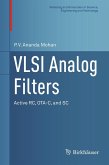Thierry Vieville
A Few Steps Towards 3D Active Vision (eBook, PDF)
40,95 €
40,95 €
inkl. MwSt.
Sofort per Download lieferbar

20 °P sammeln
40,95 €
Als Download kaufen

40,95 €
inkl. MwSt.
Sofort per Download lieferbar

20 °P sammeln
Jetzt verschenken
Alle Infos zum eBook verschenken
40,95 €
inkl. MwSt.
Sofort per Download lieferbar
Alle Infos zum eBook verschenken

20 °P sammeln
Thierry Vieville
A Few Steps Towards 3D Active Vision (eBook, PDF)
- Format: PDF
- Merkliste
- Auf die Merkliste
- Bewerten Bewerten
- Teilen
- Produkt teilen
- Produkterinnerung
- Produkterinnerung

Bitte loggen Sie sich zunächst in Ihr Kundenkonto ein oder registrieren Sie sich bei
bücher.de, um das eBook-Abo tolino select nutzen zu können.
Hier können Sie sich einloggen
Hier können Sie sich einloggen
Sie sind bereits eingeloggt. Klicken Sie auf 2. tolino select Abo, um fortzufahren.

Bitte loggen Sie sich zunächst in Ihr Kundenkonto ein oder registrieren Sie sich bei bücher.de, um das eBook-Abo tolino select nutzen zu können.
The author Thierry Viéville is a Researcher at the National Research Institute in Computer Science and Control Theory (INRIA) in France where he works in the Computer Vision and Robotics group headed by Olivier Faugeras. He is also an Associate Professor of the Nice University where he teaches active and robotic vision. Prof. Viéville participates in different European projects on computer vision.
- Geräte: PC
- ohne Kopierschutz
- eBook Hilfe
- Größe: 32.69MB
Andere Kunden interessierten sich auch für
![Stereoanalyse und Bildsynthese (eBook, PDF) Stereoanalyse und Bildsynthese (eBook, PDF)]() O. SchreerStereoanalyse und Bildsynthese (eBook, PDF)49,44 €
O. SchreerStereoanalyse und Bildsynthese (eBook, PDF)49,44 €![Advances in Neural Network Research and Applications (eBook, PDF) Advances in Neural Network Research and Applications (eBook, PDF)]() Advances in Neural Network Research and Applications (eBook, PDF)160,95 €
Advances in Neural Network Research and Applications (eBook, PDF)160,95 €![Scientific Computing in Electrical Engineering (eBook, PDF) Scientific Computing in Electrical Engineering (eBook, PDF)]() Scientific Computing in Electrical Engineering (eBook, PDF)112,95 €
Scientific Computing in Electrical Engineering (eBook, PDF)112,95 €![Handbook of 3D Machine Vision (eBook, PDF) Handbook of 3D Machine Vision (eBook, PDF)]() Handbook of 3D Machine Vision (eBook, PDF)79,95 €
Handbook of 3D Machine Vision (eBook, PDF)79,95 €![Adaptive Resonance Theory Microchips (eBook, PDF) Adaptive Resonance Theory Microchips (eBook, PDF)]() Teresa Serrano-GotarredonaAdaptive Resonance Theory Microchips (eBook, PDF)112,95 €
Teresa Serrano-GotarredonaAdaptive Resonance Theory Microchips (eBook, PDF)112,95 €![Multisensor Decision And Estimation Fusion (eBook, PDF) Multisensor Decision And Estimation Fusion (eBook, PDF)]() Yunmin ZhuMultisensor Decision And Estimation Fusion (eBook, PDF)112,95 €
Yunmin ZhuMultisensor Decision And Estimation Fusion (eBook, PDF)112,95 €![VLSI Analog Filters (eBook, PDF) VLSI Analog Filters (eBook, PDF)]() P. V. Ananda MohanVLSI Analog Filters (eBook, PDF)72,95 €
P. V. Ananda MohanVLSI Analog Filters (eBook, PDF)72,95 €-
-
-
The author Thierry Viéville is a Researcher at the National Research Institute in Computer Science and Control Theory (INRIA) in France where he works in the Computer Vision and Robotics group headed by Olivier Faugeras. He is also an Associate Professor of the Nice University where he teaches active and robotic vision. Prof. Viéville participates in different European projects on computer vision.
Dieser Download kann aus rechtlichen Gründen nur mit Rechnungsadresse in A, B, BG, CY, CZ, D, DK, EW, E, FIN, F, GR, HR, H, IRL, I, LT, L, LR, M, NL, PL, P, R, S, SLO, SK ausgeliefert werden.
Produktdetails
- Produktdetails
- Verlag: Springer Berlin Heidelberg
- Seitenzahl: 243
- Erscheinungstermin: 6. Dezember 2012
- Englisch
- ISBN-13: 9783642608421
- Artikelnr.: 53145881
- Verlag: Springer Berlin Heidelberg
- Seitenzahl: 243
- Erscheinungstermin: 6. Dezember 2012
- Englisch
- ISBN-13: 9783642608421
- Artikelnr.: 53145881
- Herstellerkennzeichnung Die Herstellerinformationen sind derzeit nicht verfügbar.
The author Thierry Viéville is a Researcher at the National Research Institute in Computer Science and Control Theory (INRIA) in France where he works in the Computer Vision and Robotics group headed by Olivier Faugeras. He is also an Associate Professor of the Nice University where he teaches active and robotic vision. Prof. Viéville participates in different European projects on computer vision.
1. From 2D to 3D Active Vision.- 1.1 The Concept of Active Vision.- 1.2 A Short Review of Existing Active Visual Systems.- 1.3 Architecture of an Active Visual System.- 1.4 2D Versus 3D Vision in an Active Visual System.- 1.5 Gaze Control in 3D Active Visual Systems.- 2. 3D Active Vision on a Robotic Head.- 2.1 A One-to-One 3D Gaze Controller.- 2.2 Active Observation of a 3D Visual Target.- 2.2.3 Statistical Filtering of the Linearized Model.- 2.3 Detection of Visual Targets for 3D Visual Perception.- 2.4 Computing the 3D Parameters of a Target.- 2.5 Experimental Results.- 3. Auto-Calibration of a Robotic Head.- 3.1 Introduction.- 3.2 Reviewing the Problem of Visual Sensor Calibration.- 3.3 Equations for the Tracking of a Stationary Point.- 3.4 Recovering the Parameters of the Trajectory.- 3.5 Computing Calibration Parameters.- 3.6 Experimental Results.- 3.7 Conclusion.- 3.8 Comparison with the Case of Known Translations.- 3.9 Application to the Case of a Binocular Head.- 3.10 Instantaneous Equations for Calibration.- 4. Inertial Cues in an Active Visual System.- 4.1 Introduction.- 4.2 The Use of Inertial Forces in a Robotic System.- 4.3 Auto-Calibration of Inertial Sensors.- 4.4 Separation Between Gravity and Linear Acceleration.- 4.5 Integration of Angular Position.- 4.6 Computing Self-Motion with a Vertical Estimate.- 4.7 Conclusion.- 5. Retinal Motion as a Cue for Active Vision.- 5.1 Definition and Notation.- 5.2 Using Collineations to Analyse the Retinal Motion.- 5.3 Estimation of Retinal Motion from Correspondences.- 5.4 Implementation and Experimental Results.- 5.5 Conclusion.- 6. Uncalibrated Motion of Points and Lines.- 6.1 Introduction.- 6.2 Representations of the Retinal Motion for Points.- 6.3 Representations of the Retinal Motion for Points and Lines.- 6.4Implementation and Experimental Results.- 6.5 Conclusion.- 6.6 Application to the Planar Case.- 7. Conclusion.- References.
1. From 2D to 3D Active Vision.- 1.1 The Concept of Active Vision.- 1.2 A Short Review of Existing Active Visual Systems.- 1.3 Architecture of an Active Visual System.- 1.4 2D Versus 3D Vision in an Active Visual System.- 1.5 Gaze Control in 3D Active Visual Systems.- 2. 3D Active Vision on a Robotic Head.- 2.1 A One-to-One 3D Gaze Controller.- 2.2 Active Observation of a 3D Visual Target.- 2.2.3 Statistical Filtering of the Linearized Model.- 2.3 Detection of Visual Targets for 3D Visual Perception.- 2.4 Computing the 3D Parameters of a Target.- 2.5 Experimental Results.- 3. Auto-Calibration of a Robotic Head.- 3.1 Introduction.- 3.2 Reviewing the Problem of Visual Sensor Calibration.- 3.3 Equations for the Tracking of a Stationary Point.- 3.4 Recovering the Parameters of the Trajectory.- 3.5 Computing Calibration Parameters.- 3.6 Experimental Results.- 3.7 Conclusion.- 3.8 Comparison with the Case of Known Translations.- 3.9 Application to the Case of a Binocular Head.- 3.10 Instantaneous Equations for Calibration.- 4. Inertial Cues in an Active Visual System.- 4.1 Introduction.- 4.2 The Use of Inertial Forces in a Robotic System.- 4.3 Auto-Calibration of Inertial Sensors.- 4.4 Separation Between Gravity and Linear Acceleration.- 4.5 Integration of Angular Position.- 4.6 Computing Self-Motion with a Vertical Estimate.- 4.7 Conclusion.- 5. Retinal Motion as a Cue for Active Vision.- 5.1 Definition and Notation.- 5.2 Using Collineations to Analyse the Retinal Motion.- 5.3 Estimation of Retinal Motion from Correspondences.- 5.4 Implementation and Experimental Results.- 5.5 Conclusion.- 6. Uncalibrated Motion of Points and Lines.- 6.1 Introduction.- 6.2 Representations of the Retinal Motion for Points.- 6.3 Representations of the Retinal Motion for Points and Lines.- 6.4Implementation and Experimental Results.- 6.5 Conclusion.- 6.6 Application to the Planar Case.- 7. Conclusion.- References.







